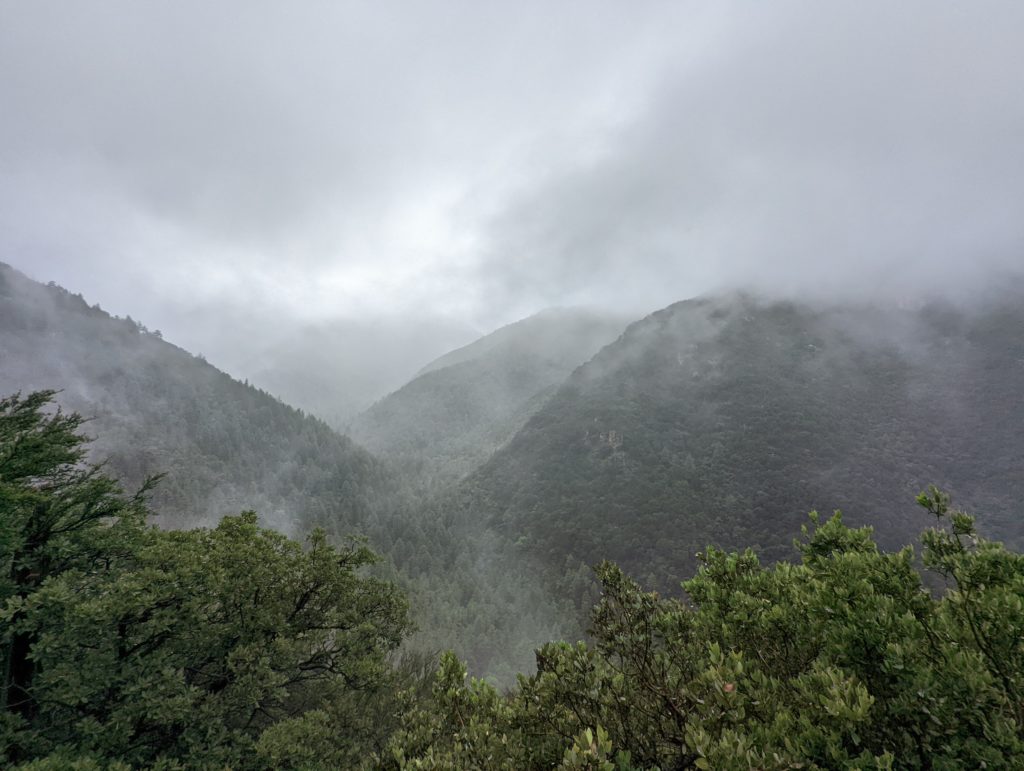
By Jonathan Patt, Wild Arizona’s Field Operations Manager.
Welcome back to our first crew update and our first full normal hitch since our summer Youth Conservation Corps program! This week we worked in the Miller Peak Wilderness in the Huachuca Mountains outside of Sierra Vista. Six months ago we were working in this same area and it always brought interesting weather experiences with it, so we were on heightened alert for more of the same, especially with a tropical weather pattern in the forecast!
Since our break we have three new crew members: Olivia moved out from New Orleans over the summer after graduating college, and Mary & John just joined this hitch coming from Idaho with multiple years experience working in conservation and trails. Welcome to these three great additions to the crew!
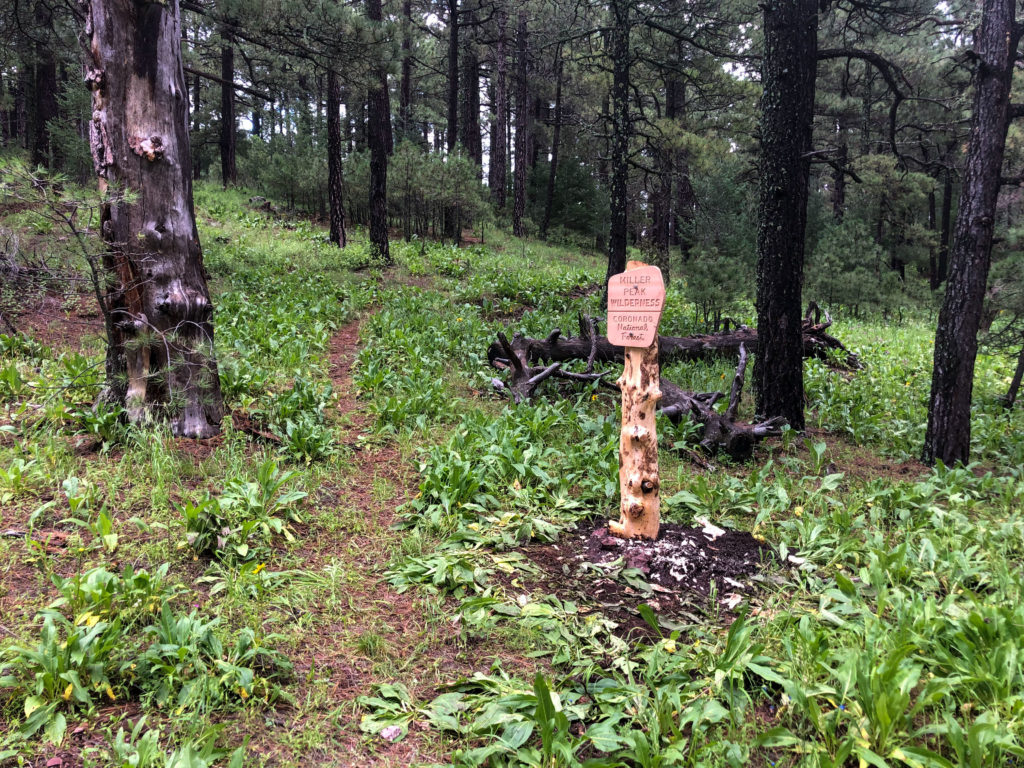
Newly installed Miller Peak Wilderness sign. 
Morning fog on the Hamburg Trail.
Our hitch was primarily focused on general trail maintenance across several trails: the Comfort Spring Trail, Hamburg Trail, and Pat Scott Canyon Trail. We also installed new Wilderness boundary signs on the Carr Peak Trail and Crest Trail at the Fort Huachuca boundary while we were out.
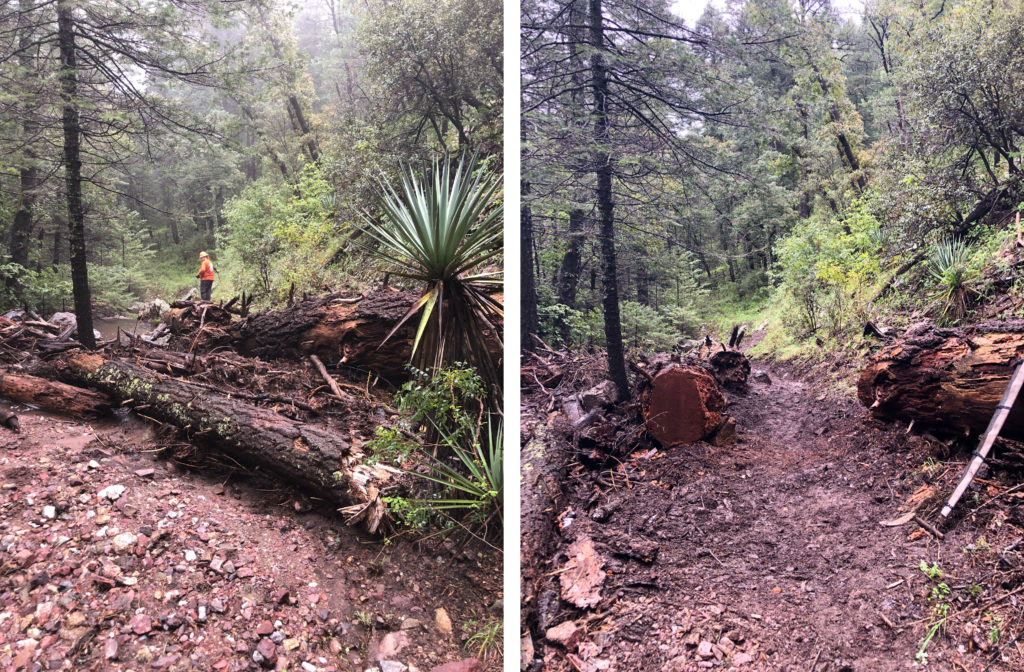
Starting in from the very scenic Ramsey Vista campground at the end of the Carr Canyon Road, we hiked in through already damp vegetation along the Comfort Spring Trail, cutting a few logs along the way before stashing our tools and continuing down to set up our camp near the historical Hamburg Mine. Over the next few days, we brushed the Comfort Spring Trail, cut more deadfall, and repaired tread damage. By the second day it was already raining on us pretty well, and it would be several days before we saw even a trace of the sun again.

In addition to large quantities of rain (one day it was actually very pleasant out… before the biggest storm yet began and we had to bail out of the canyon back to camp because the creek rapidly began to rise and turn brown), we saw an abundant variety of mushrooms growing everywhere in the canyon, at a greater density than most of us had seen anywhere around. Another big highlight was managing to finally get enough dry wood to start a fire and keeping it dry for the latter half of the hitch so we could start to warm up and dry out in the evenings, which gave us all something to look forward to even on days with constant rain.
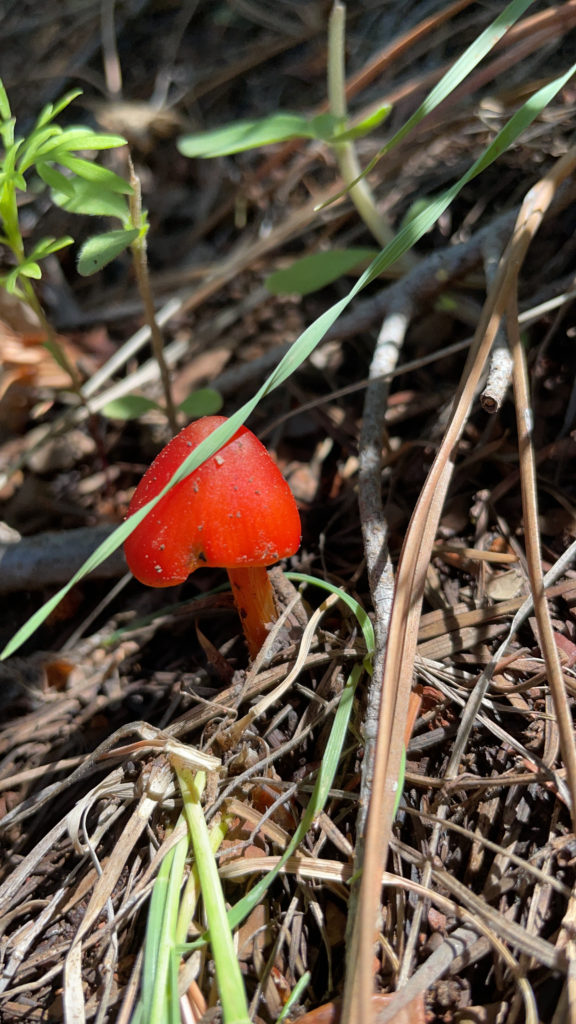
One of thousands of mushrooms seen in the Huachucas. Photo by Sam Baggenstos. 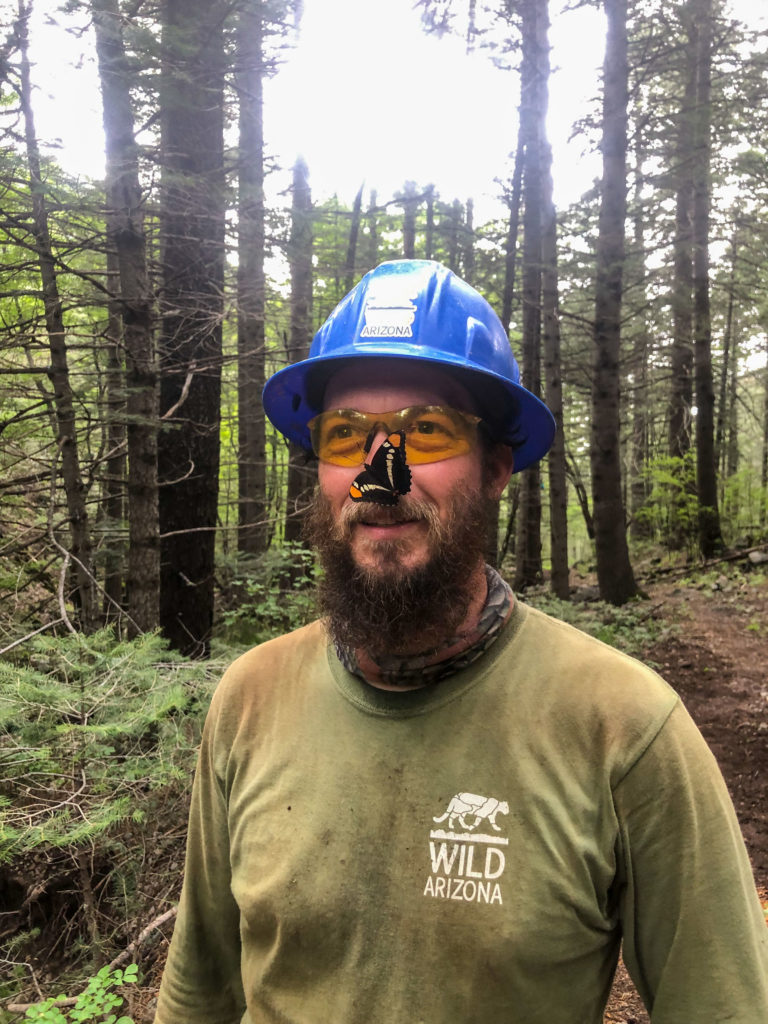
Jonathan with a butterfly friend seeking shelter from the storm. Photo by John Clark–Kuebler.
With Comfort Spring behind us, we worked past our camp repairing erosion damage and installing drains on the Hamburg Trail, including building several rock walls to armor cutbanks along the trail from future erosion and redirecting a creek crossing to flow in its natural drainage rather than down the trail.
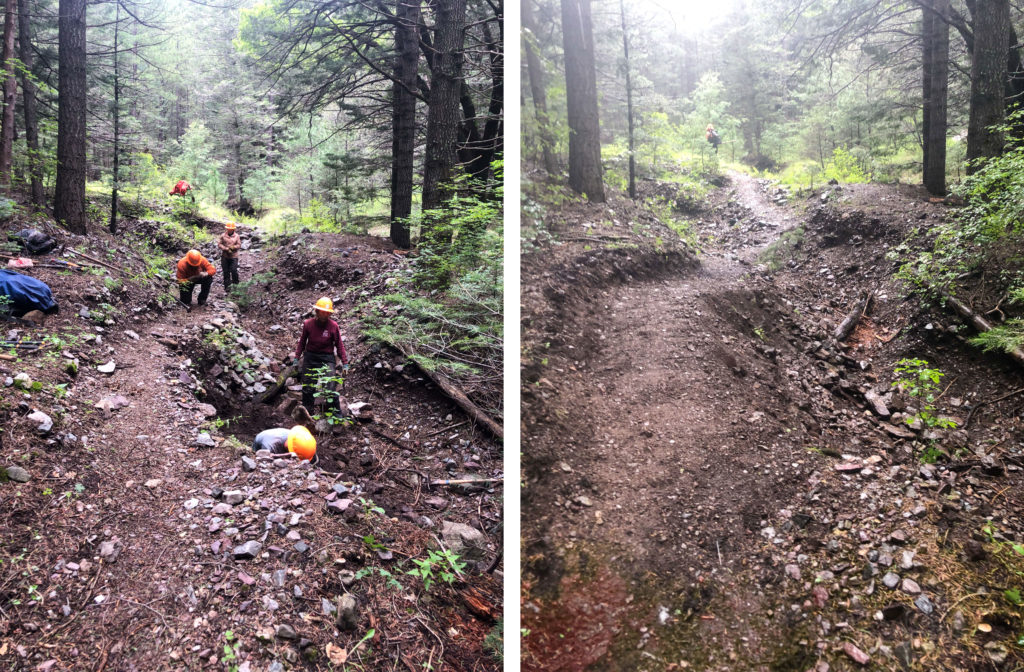
Upon reaching the junction with Wisconsin Canyon, we turned right up the Pat Scott Canyon Trail. This canyon gets a lot more narrow and features a long series of cascades and numerous creek crossings—which had all come up from all the rain! The assortment of brushing, drain construction, and various treadwork was supplemented by nearly every creek crossing needing some sort of repair or cleanup of debris that was sometimes obscuring the trail and other times directing water out of the creek and onto the trail.
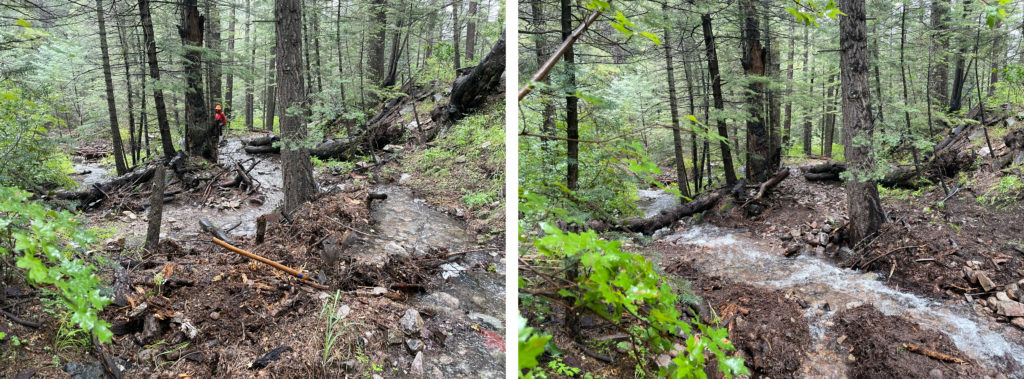
A lot of our work this hitch focused on keeping water off the trail, between repairing creek and side drainage crossings to flow in their natural courses, building new drains, and taking down the built up berm on the outside edge of the trails to restore a proper outslope so water flows across the trail and down rather than along it, eroding it in the process.

All told, we cut 42 logs, built 77 drains, built about half a dozen rock retaining structures of varying sizes, and repaired numerous creek crossings. It was a very soggy but productive hitch, and a reminder that weather in Arizona isn’t always hot and dry (even if this much rain is extremely rare!).

Ramsey Peak from the top of the Pat Scott Trail. Photo by Mary E. Clark–Kuebler. 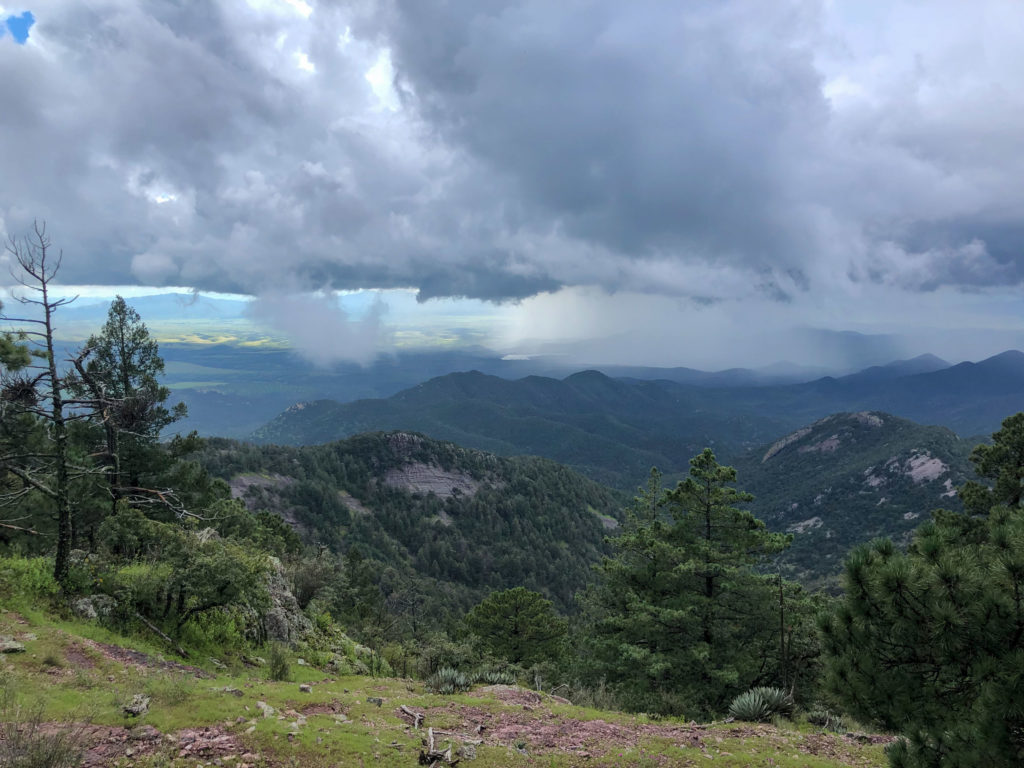
The view from the Crest Trail looking out towards a storm. 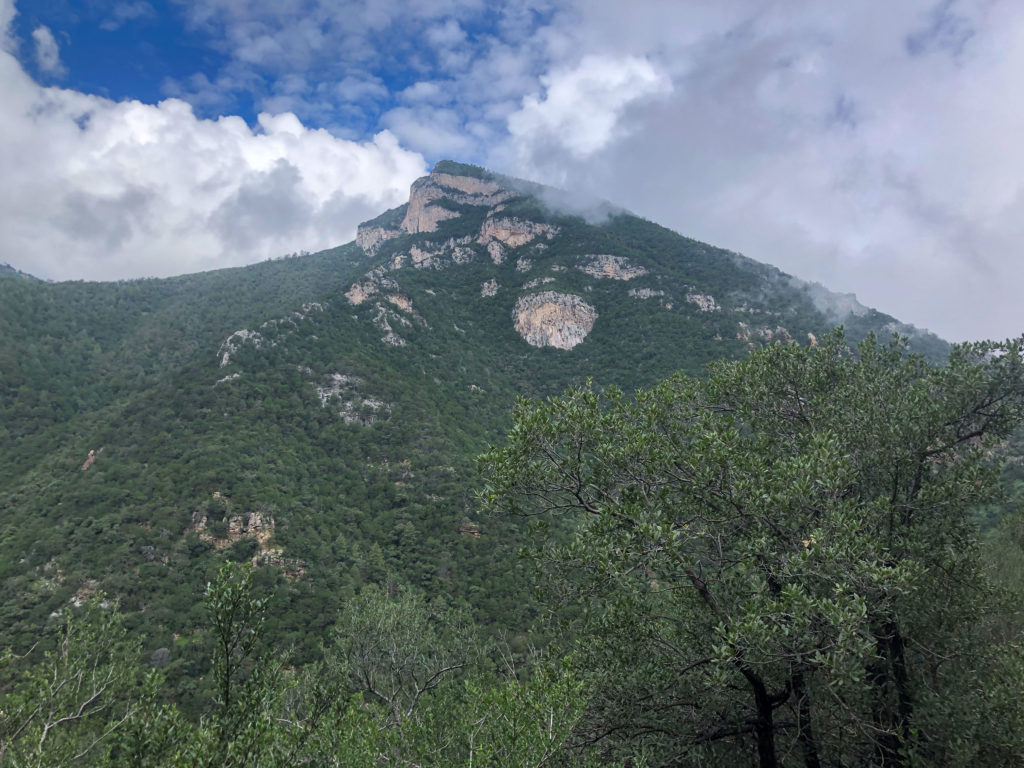
Ramsey Peak from below. 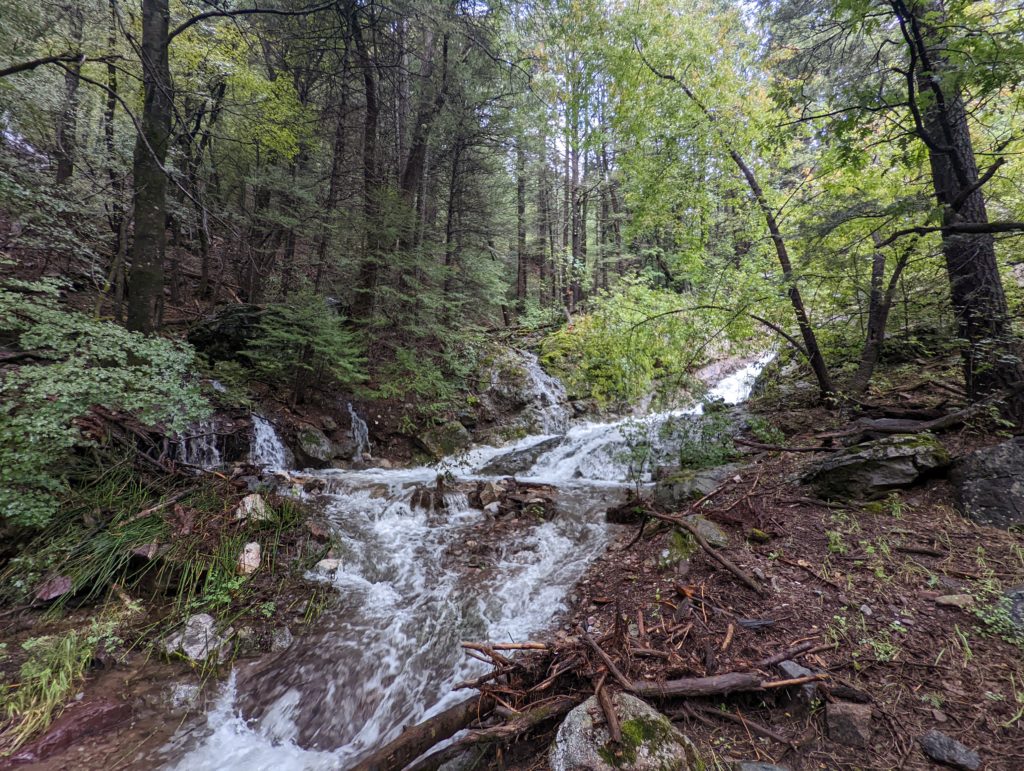
A cascading waterfall in Pat Scott Canyon. Photo by Mary E. Clark–Kuebler.








